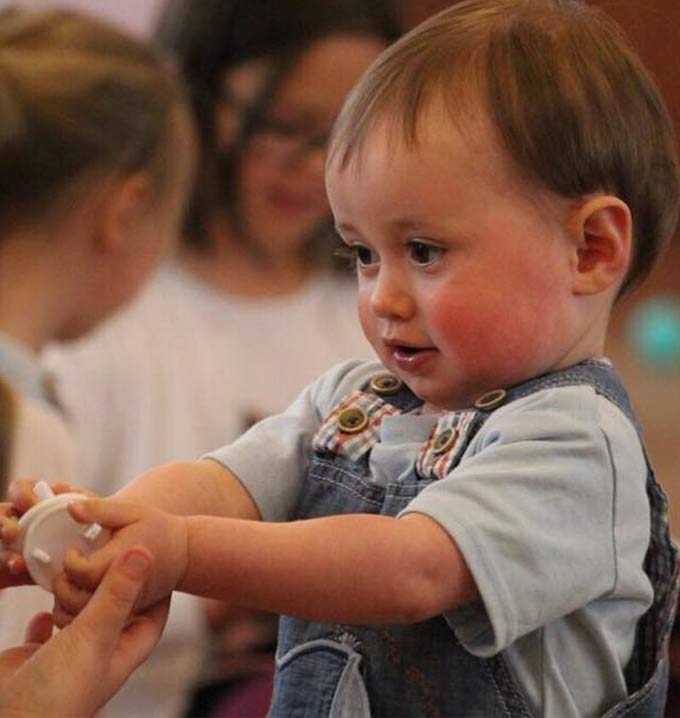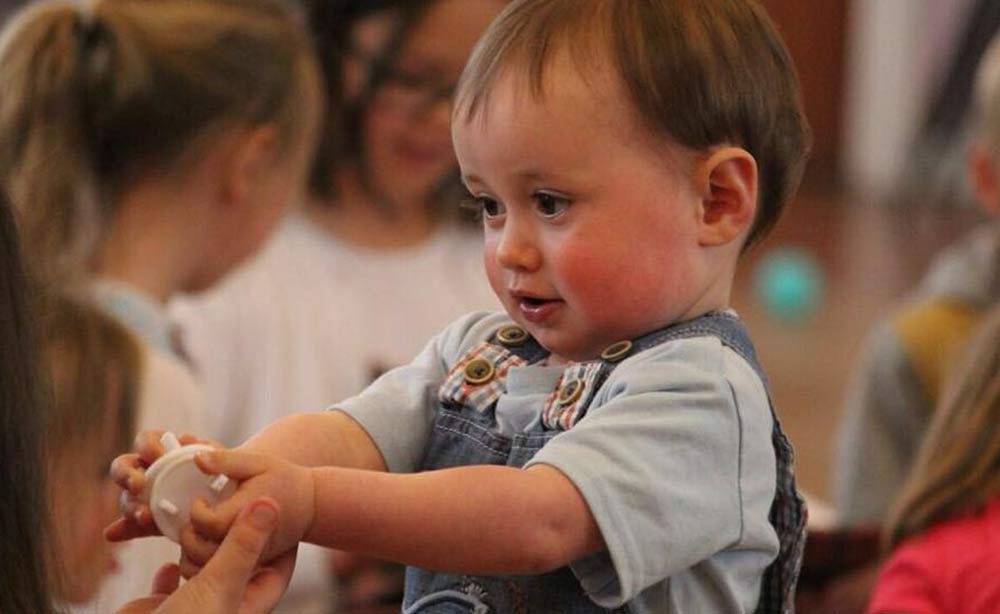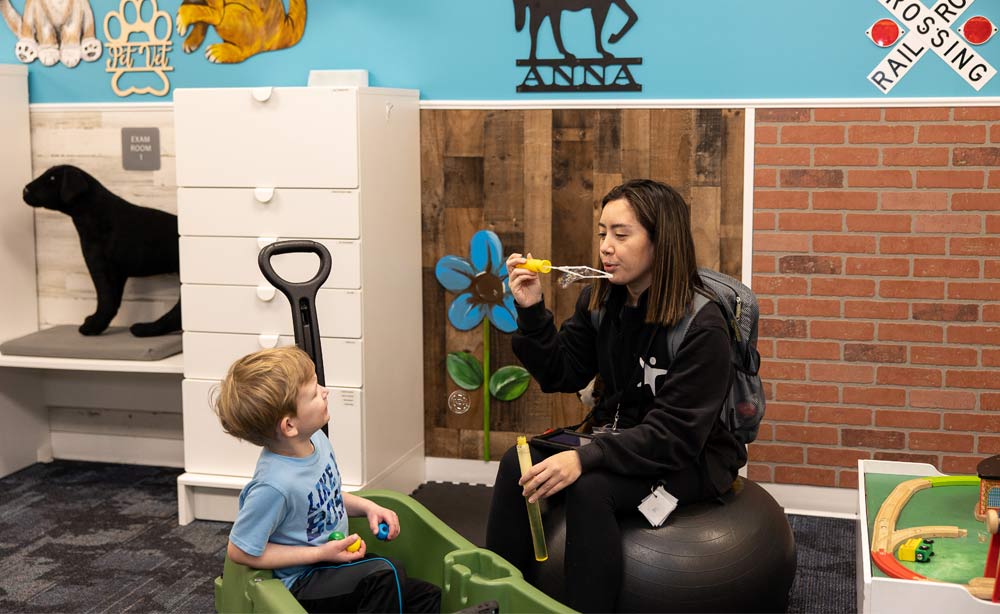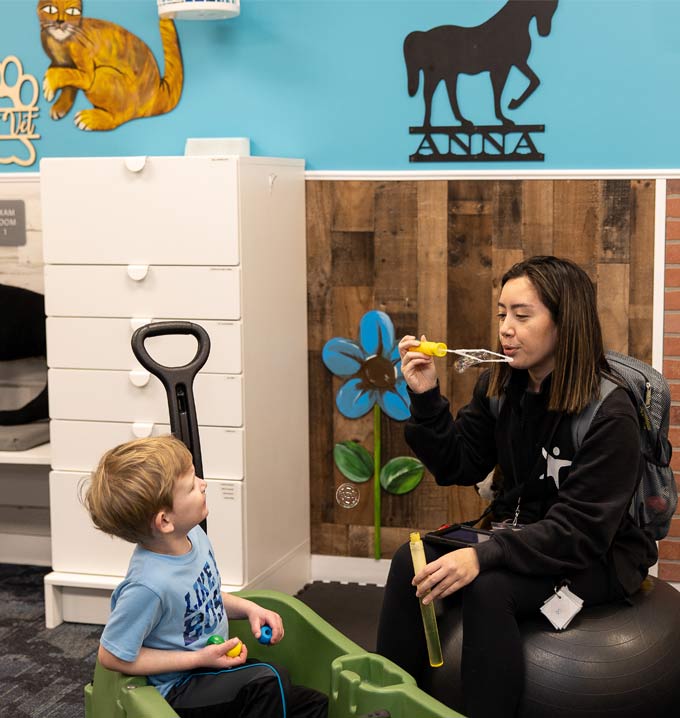Early detection of ASD and early application of ABA therapy can positively impact your autistic child’s quality of life. Parents are encouraged to act quickly to get the full benefit of ABA and give their children the best opportunity to develop their social, behavioral, and communication skills.

The Benefits of Early Intervention and Full-Time ABA Therapy
Any therapist you talk to about autism and autistic children will tell you that the earlier you detect Autism Spectrum Disorder (ASD) in your child, the more effective any intervention will be. This is especially true of Applied Behavior Analysis (ABA) therapy in autism.
Research has shown that early ABA intervention in autism at a young age is associated with better outcomes in life skills development and helps reduce challenging behaviors that can make it difficult for children with autism to interact with others and learn in traditional ways.
Find out why it is important to detect ASD early and the benefits of early intervention for autism with ABA therapy.
How do I know my child is autistic?
Signs of ASD can start showing up in babies as young as six months old. And by the time they’re 12–18 months old, those signs can become even more noticeable.
In fact, the American Academy of Pediatrics recommends that all 18–24-month-old children be screened for ASD and other developmental disorders. If you do see anything that worries you, don’t hesitate to talk to your child’s doctor about it.
Common signs cut across three different categories – social, communication, and behavior. These signs may manifest in the following ways:
Social
- Avoiding eye contact
- Not responding to smiles or other facial expressions
- Making facial expressions that don’t suit the context
- Struggling to understand other people’s facial expressions
- Ignoring objects when they’re pointed out
- Not pointing out objects to others
- Having difficulty showing empathy
- Less likely to share things with others
- Not responding when their name is called
- Not using toys or other objects during play as expected
Communication
- Not saying single words by 15 months or two-word phrases by 24 months
- Repeating words without understanding their meaning
- Showing little interest in communicating with others
- Losing language or social skills between 15 months and 2 years old.
- Unable to express feelings or thoughts independently
- Not babbling, or echoing sounds as an infant
Behavior
- Engages in repetitive behaviors (stimming), such as rocking, spinning, twirling fingers, or flapping hands, to self-regulate
- Walks on toes for extended periods
- Prefers routine and struggles with changes or transitions to new activities
- Can become fixated on a specific object or interest
- Repeats certain activities or actions over and over
- Has heightened or diminished sensitivity to smell, sound, light, texture, or touch
By catching any potential issues early, you can give your child the best possible chance for early intervention and successful treatment.
What is ABA?
ABA is a type of therapy that helps individuals with ASD learn new skills and shape their behavior by using positive reinforcement and other teaching strategies in a way that’s fun and engaging for the person receiving therapy.
ABA therapy has been shown to be really effective for people with ASD of all ages. Benefits include improvements and help with all kinds of skills, like communication, social interaction, and self-care.
Does early intervention work for autism?
The short answer is yes. Early intervention in children with autism means starting a treatment or therapy during the pre-preschool years – basically from birth to around age 3 – and there are many reasons why.
At that age, the brain is super flexible and able to learn a lot more easily than it will be later on. That’s why starting treatment early is so important – it gives your child the best possible chance to make big strides in their development.
Here are some key reasons why early detection of autism and early intervention with ABA therapy is so important.
Neuroplasticity
The biggest advantage of early intervention when it comes to Autism Spectrum Disorder has to do with something called neuroplasticity. This simply means that the brain can change and adapt based on what it’s experiencing.
When kids with ASD receive early intervention, there’s a better chance that their brain development will be positively influenced, creating and shaping new neural pathways early on. This can sometimes even prevent challenging behaviors from becoming habits, which can be a big help for both the child and their family.
Learning and school-readiness
Another benefit of early intervention is that it can help children with ASD to be better prepared for starting school. ABA can help children with autism develop the skills they need to learn effectively in a group or classroom setting, like paying attention to the teacher, following directions, and working cooperatively with peers.
Communication skills
ABA is particularly effective in developing communication skills in autistic children. This can include teaching them how to use language to communicate their needs, wants, and thoughts. Depending on the needs of the child and family, different communication styles can be taught, and ABA teams should collaborate with other providers to best determine what direction to go in.
Social skills
ABA can also help children with ASD develop social skills, such as how to make friends, take turns, and engage in conversation. The sooner they learn these, the easier their lives will be in social settings.
Behavior
Early intervention with ABA can also help reduce challenging behaviors in autistic children. In many instances, it teaches them how to manage their emotions, follow rules, and engage in other appropriate behaviors, including how to ask for space or a break if needed.
Parenting
Parenting a child with autism is challenging, which makes it important to really understand your child’s unique traits and behaviors. This is especially true when they’re upset or distressed and may not communicate in the same way as other kids.
ABA teaches new techniques that can help you interact with your child in a more effective way and offer innovative solutions that can make a big difference for both you and your child. ABA therapy is not just about working with your child, it’s about incorporating the family into services and making sure the skills your child learns in therapy can be transferred to the home setting.
Matching their peers
A really important study done by Dr. Ivar Lovaas showed that almost half of the children who received early intensive ABA Therapy were able to catch up to the average range of their peers in intellectual and educational function.
Independent living skills
It is really important for autistic children to do things independently, just like other children, and early intervention helps your child learn important life skills right from the beginning.
When you start working on these skills early on, your child is much more likely to become confident and independent as they grow. This can be a big help in dealing with all kinds of challenges that come up in daily life. Think of things from washing their own hands, to toilet training, dressing independently, to packing their own lunch.
Intervene early with the Lighthouse Autism Center
Lighthouse fusion ABA therapy is an innovative approach used by the Lighthouse Autism Center to fuse the best practices of ABA and speech therapy into a one-of-a-kind clinical model that delivers better outcomes for children with autism. LAC combines this with various autism resources to help you and your child live a better life.






























